 W
WThe history of Chinese Americans or the history of ethnic Chinese in the United States includes three major waves of Chinese immigration to the United States, beginning in the 19th century. Chinese immigrants in the 19th century worked as laborers, particularly on transcontinental railroads such as the Central Pacific Railroad. They also worked as laborers in mining, and suffered racial discrimination at every level of society. Industrial employers were eager for this new and cheap labor, whites were stirred to anger by the "yellow peril." Despite provisions for equal treatment of Chinese immigrants in the 1868 Burlingame Treaty, political and labor organizations rallied against immigrants of what they regarded as a degraded race and "cheap Chinese labor."
 W
WAh Toy Garden is a garden located within Payette National Forest. The garden was established by the Chinese American community in order to grow fruits and vegetables to maintain a traditional Chinese diet while Chinese immigrant laborers worked in the mines. There are three other Chinese-American gardens in the Warren Mining District.
 W
WAngel Island Immigration Station was an immigration station located in San Francisco Bay which operated from January 21, 1910 to November 5, 1940, where immigrants entering the United States were detained and interrogated. Angel Island is an island in San Francisco Bay. It is currently a State Park administered by California State Parks and a California Historical Landmark. The island was originally a fishing and hunting site for Coastal Miwok Indians, then it was a haven for Spanish explorer Juan Manuel de Ayala. Later, it was developed as a cattle ranch, then, starting with the Civil War, the island served as a U.S. Army post. During the island's Immigration Station period, the island held hundreds of thousands of immigrants, the majority from China, Japan, India, Mexico and the Philippines. The detention facility was considered ideal because of its isolated location, making it very easy to control immigrants, contain outbreaks of disease, and enforce the new immigration laws. The station is listed on the National Register of Historic Places under the title Angel Island, U.S. Immigration Station, and is a National Historic Landmark. The station is open to the public as a museum – "a place for reflection and discovery of our shared history as a nation of immigrants".
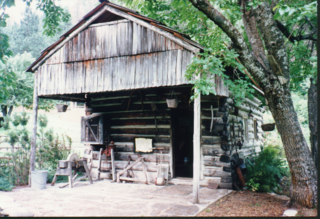 W
WPolly Bemis House was the home of pioneers to Idaho County, Idaho, USA, Charles Bemis and his wife Polly Bemis, who lived alongside the Salmon River in the late 19th and early 20th century. Polly was a Chinese American former teenage slave whose story became a biographical novel and was fictionalized in the 1991 film A Thousand Pieces of Gold.
 W
WThe Bok Kai Temple is a traditional Chinese temple in the city of Marysville, California, located at the corner of D and First Streets, and served as the center of what was a bustling Chinatown for a small town.
 W
WThe Cable Act of 1922 was a United States federal law that partially reversed the Expatriation Act of 1907. (It is also known as the Married Women's Citizenship Act or the Women's Citizenship Act). In theory the law was designed to grant women their own national identity; however, in practice, as it still retained vestiges of coverture, tying a woman's legal identity to her husband's, it had to be amended multiple times before it granted women citizenship in their own right.
 W
WChan Is Missing is a 1982 American independent comedy-drama film produced and directed by Wayne Wang. The film, which is shot in black and white, is plotted as a mystery with noir undertones, and its title is a play on the popular Charlie Chan film series which focuses on a fictional Chinese immigrant detective in Honolulu. Chan Is Missing turns the Charlie Chan detective trope on its head by making "Chan" the missing person that the film's two protagonists, Jo and Steve, search for. In the process of trying to locate Chan, a fractured, even contradictory portrait of him emerges, mirroring the complexities of the polyglot Chinese American community that Chan's character allegorizes.
 W
WChi–Sandra Garden, also known as 10IH1779, is a garden located within Payette National Forest. The garden was established by the Chinese American community to feed migrant laborers who worked in the mines. There are three other Chinese-American gardens in the Warren Mining District.
 W
WChin Lin Sou was an influential leader in the Chinese American community and prominent figure in Colorado. He immigrated to the United States from Guangzhou, China, in 1859 at the age of 22. Chin stood out amongst his Chinese peers at the time in the United States as he dressed like a westerner and spoke perfect English.
 W
WThe China Ditch in Douglas County, in the U.S. state of Oregon, was a 30-mile (48 km) canal built in part by Chinese laborers to supply water for the hydraulic mining of gold. The Myrtle Creek Consolidated Hydraulic Gold Mining and Manufacturing Company began purchasing land for the ditch in 1890 and was bankrupt by 1894. Portions of the ditch, which carried water from Little River to North Myrtle Creek, remain visible, and an 11-mile (18 km) section is listed on the National Register of Historic Places.
 W
WChinatown bus lines are discount intercity bus services, often operated by Chinese Americans and Chinese Canadians. They have been established primarily in the Chinatown communities of the East Coast of the United States and Central Canada since 1998, and similar services operate on the West Coast. They operate in 24 U.S. states and three Canadian provinces. Most Chinatown bus lines are based in the northeastern United States.
 W
WChinatown Family is a 1948 novel by Lin Yutang set in New York City's Chinatown of the 1920s and 1930s, concerning the experiences of the Fongs, a Chinese-American family in becoming successful by hard work and endurance in a sometimes less than welcoming America.
 W
WThe Chinatown Historic District is a neighborhood of Honolulu, Hawaii, known for its Chinese American community. It is one of the oldest Chinatowns in the United States.
 W
WChinese Camp is a census-designated place (CDP) in Tuolumne County, California, United States. The population was 126 at the 2010 census, down from 146 at the 2000 census. It lies in the grassy foothills of the Sierra Nevada near the southern end of California's Gold Country.
 W
WChinese Cemetery, also known as Chinese Cemetery, Warren Mining District, is a cemetery located near Warren, Idaho. It is the only ethnic Chinese cemetery in Idaho that is listed on the National Register of Historic Places and was listed on March 29, 1994. The cemetery was created to hold the remains of Chinese migrant laborers who came to Idaho to work as miners, though many of the bodies have since been exhumed and returned to China.
 W
WThe Chinatown neighborhood in Oakland, California(Chinese: 屋崙華埠), is traditionally Chinese which reflects Oakland's diverse Chinese American, and more broadly Asian American community. It is frequently referred to as "Oakland Chinatown" in order to distinguish it from nearby San Francisco's Chinatown. It lies at an elevation of 39 feet.
 W
WThe Chinese Exclusion Act was a United States federal law signed by President Chester A. Arthur on May 6, 1882, prohibiting all immigration of Chinese laborers. Building on the 1875 Page Act, which banned Chinese women from immigrating to the United States, the Chinese Exclusion Act was the first, and remains the only law to have been implemented, to prevent all members of a specific ethnic or national group from immigrating to the United States.
 W
WThe Chinese massacre of 1871 was a racial massacre that occurred on October 24, 1871, in Los Angeles, California, when a mob of around 500 White and Hispanic persons entered Old Chinatown and attacked, bullied, robbed, and murdered Chinese residents in cold blood. The massacre took place on Calle de los Negros also referred to as "Negro Alley". The mob gathered after hearing that a policeman had been shot and a rancher killed by Chinese. A few 21st-century sources have described this as the largest mass lynching in American history.
 W
WThe Chinese Odd Fellows Building, in Boise, Idaho, is an Odd Fellows building that was built in 1911. It was listed on the National Register of Historic Places in 1982. It served historically as a clubhouse and as a business.
 W
WAt their peak, there were six Chinese Society Halls on Maui. Operated by the Gee Kung Tong Society, these halls were created to provide services to immigrant Chinese workers, mostly working for the sugarcane plantations. All provided religious and political help, in addition to mutual aid. Only the Wo Hing Society Hall in Lahaina and the Ket Hing Society Hall in Kula have survived. Both were placed on the Hawaii State Register of Historic Places on July 30, 1982, and placed on the National Register of Historic Places on November 15, 1982. The Chee Kung Tong Society Hall was placed onto both State and Federal registers, but collapsed in 1996.
 W
WPrior to the Chinese Student Protection Act of 1992 (CSPA), President George H.W Bush issued Executive Order 12711 in 1990. This policy implementation was solidified by the actual Act in 1992. The Act's main sponsors were Nancy Pelosi (D-CA) for the House of Representatives and Senator Slade Gorton (R-WA) for the Senate. The Chinese Student Protection Act of 1992 was passed on May 21, 1992 by the Senate, and passed by the House of Representatives on August 10, 1992. President George H. W. Bush signed it into law on October 9, 1992. The Chinese Student Protection Act became Public Law 102-404, 106 Stat. 1969.
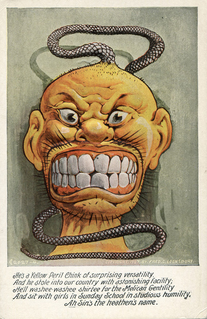 W
WChink is an English-language ethnic slur usually referring to a person of Chinese descent. However, the word is also indiscriminately used against people who look and have an East or Southeast Asian appearance. The use of the term is considered highly offensive and racist, and its inclusion in modern works of literature or media has sparked controversies.
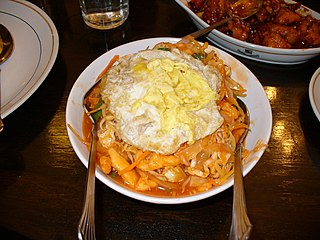 W
WChop suey is a dish in American Chinese cuisine and other forms of overseas Chinese cuisine, consisting of meat and eggs, cooked quickly with vegetables such as bean sprouts, cabbage, and celery and bound in a starch-thickened sauce. It is typically served with rice but can become the Chinese-American form of chow mein with the addition of stir-fried noodles.
 W
WThe Sam Choy Brick Store, Angels Camp, California, is the only building remaining from a large Chinese settlement during the California gold rush. It was listed on the National Register of Historic Places in 1984.
 W
WThe Chung Wah Cemetery, also known as China Mission-Chung Wah Chinese Cemetery, in Folsom, California is a cemetery from 1906.
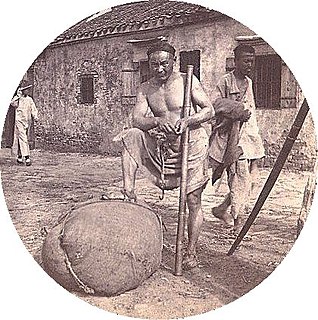 W
WThe word coolie was first popularized in the 16th century by European traders across Asia, and by the 18th century would refer to migrant Indian or Chinese laborers, and by the 19th century, would gain a new definition of the systematic shipping and hiring of Asian workers under contract on plantations that had been formerly worked by enslaved Africans. The word has had a variety of other implications and is sometimes regarded as offensive or a pejorative, depending upon the historical and geographical context; in India, its country of origin, it is still considered a derogatory slur. It is similar, in many respects, to the Spanish term peón, although both terms are used in some countries with different implications.
 W
WAmerican Chinese cuisine is a style of Chinese cuisine developed by Chinese Americans. The dishes served in many North American Chinese restaurants are adapted to American tastes and often differ significantly from those found in China.
 W
WMajor General John Liu Fugh was the first Chinese American to attain general officer status in the U.S. Army. He was of Manchu descent. He was the 33rd Judge Advocate General of the U.S. Army.
 W
WThe Geary Act was a United States law that extended the Chinese Exclusion Act of 1882 by adding onerous new requirements. It was written by California Representative Thomas J. Geary and was passed by Congress on May 5, 1892.
 W
WThe George D.D. Huie Grocery Store Building is a historic commercial building at 1400 North Pine Street in North Little Rock, Arkansas. It has a single-story front section with a gable roof, which housed the retail space, with a two-story rear section used as the proprietor's residence. This buff brick building was built by George Huie, a Chinese immigrant, in 1949 on the site of a store he had operated since 1938. The store is historically important for its role in the growth and development of the local Chinese community, and for its service to the historically African-American neighborhood in which it stands. It presently houses a small museum.
 W
WThe Chicago metropolitan area has an ethnic Chinese population. As of 2010, there are 43,228 Chinese Americans who live in Chicago, 1.6% of the city's population. This population includes native-born Chinese as well as immigrants from Mainland China, Taiwan, Hong Kong and Southeast Asia, and also racially mixed Chinese.
 W
WHistorically there has been a population of Chinese Americans in Los Angeles and the Los Angeles Metropolitan Area. As of 2010, there were 393,488 Chinese Americans in Los Angeles County, 4.0% of the county's population, and 66,782 Chinese Americans in the city of Los Angeles.
 W
WAccording to The Oregonian, 18,000 of the Portland metropolitan area's 135,000 Asian/Pacific residents live along 82nd Avenue, in an area dubbed New Chinatown, as of 2012.
 W
WGreater Seattle has had a Chinese American community almost since its founding in 1851. Chinese workers arriving in the 1860s were welcomed, because the Seattle area was sparsely settled and workers were needed; within a few decades, however, newly arrived white settlers resented the Chinese workers, and there were several anti-Chinese riots as the whites attempted to expel the Chinese from the area. Chinese settlement persisted, with the immigrants settling in a well-defined Chinatown where they maintained their culture through family groups, associations, and churches. In the mid-20th century Chinese Americans joined with other immigrant groups to oppose racial discrimination. In 1962 a Chinese American became the first person of Asian ancestry to hold elective office in the state of Washington.
 W
WJohn Chinaman was a stock caricature of a Chinese laborer seen in cartoons of the 19th century. Also referenced by Mark Twain and popular American songs of the period, John Chinaman represented, in western society, a typical persona of China. He was typically depicted with a long queue and wearing a coolie hat.
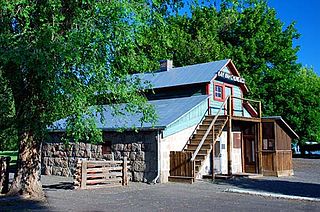 W
WThe Kam Wah Chung & Co. Museum, also known as Kam Wah Chung Company Building, is a state park and a National Historic Landmark that preserves early Chinese culture in John Day in the U.S. state of Oregon. Built in the 1870s, possibly as a trading post, it is the best-preserved example of a Chinese herbal apothecary and mercantile establishment dating to the post-Civil War period of growth in the Western United States.
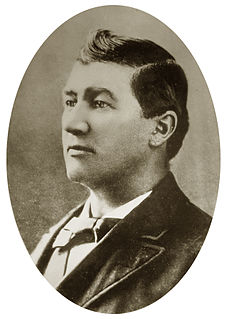 W
WDenis Kearney (1847–1907) was a California labor leader from Ireland who was active in the late 19th century and was known for his racist views about Chinese immigrants. Called "a demagogue of extraordinary power," he frequently gave long and caustic speeches that focused on four general topics: contempt for the press, for capitalists, for politicians, and for Chinese immigrants. A leader of the Workingmen's Party of California, he is known for ending all of his speeches with the sentence "And whatever happens, the Chinese must go"
 W
WThe Temple of Kwan Tai is a Chinese Taoist temple in Mendocino, California, dedicated to Kwan Tai. It is California Historical Landmark #927.
 W
WClara Elizabeth Chan Lee was the first Chinese American woman to register to vote in the United States. She registered to vote on November 8, 1911 in California following the passage of Proposition 4 in California, nine years before the passage of the Nineteenth Amendment to the United States Constitution.
 W
WHuping Ling is a professor of history and past department chair at Truman State University in Kirksville, Missouri, where she founded the Asian studies program.
 W
WCities considered to have significant Chinese-American populations are large U.S. cities or municipalities with a critical mass of at least 1% of the total urban population; medium-sized cities with a critical mass of at least 1% of their total population; and small cities with a critical mass of at least 10% of the total population.
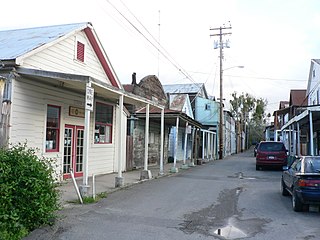 W
WLocke, also known as Locke Historic District, is an unincorporated community in California's Sacramento–San Joaquin River Delta. The 10 acre town was built between 1893 and 1915 approximately one mile north of the town of Walnut Grove. Prior to the railroads and town, the delta swampland was home to Native American Miwoc and Maidu tribes for hundreds of years. Tribal burial grounds exist on the Locke parcel. The village of Lockeport began where the Sacramento Valley Railway and Union Pacific Railroads merged at the southwest corner of the 490 acre swampland parcel deeded on July 6, 1883 to Founder, George W. Locke and his mercantile business partner, Samuel P. Lavenson. Both men were lured in their youth by the California Gold Rush from their birthplaces in New Hampshire.
 W
WThe Chinese Exclusion Repeal Act of 1943, also known as the Magnuson Act, was an immigration legislation proposed by U.S. Representative Warren G. Magnuson of Washington and signed into law on December 17, 1943 in the United States. It allowed Chinese immigration for the first time since the Chinese Exclusion Act of 1882, and permitted some Chinese immigrants already residing in the country to become naturalized citizens. However, the Magnuson Act provided for the continuation of the ban against the ownership of property and businesses by ethnic Chinese. In many states, Chinese Americans were denied property-ownership rights either by law or de facto until the Magnuson Act itself was fully repealed in 1965.
 W
WAfong Moy was the first female Chinese immigrant to the United States. In 1834, Moy was brought from her hometown of Guangzhou to New York City by traders Nathaniel and Frederick Carne, and exhibited as "The Chinese Lady". Announcements of her exhibitions advertised her clothing, her language, and her four-inch "little feet", a result of foot binding.
 W
WThe New York Chinese Scholar's Garden is part of the Staten Island Botanical Garden, located in the Snug Harbor Cultural Center. Materials were shipped to Staten Island in the spring of 1998, when a team of 40 Chinese artists and artisans from Suzhou constructed the garden. It opened in June of 1999.
 W
WThe Page Act of 1875 was the first restrictive federal immigration law in the United States, which effectively prohibited the entry of Chinese women, marking the end of open borders. The 1882 Chinese Exclusion Act would go on to ban immigration by Chinese men as well.
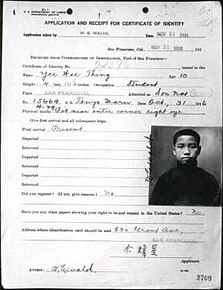 W
WPaper sons or paper daughters is a term used to refer to Chinese people who were born in China and illegally immigrated to the United States by purchasing fraudulent documentation which stated that they were blood relatives to Chinese Americans who had already received U.S. citizenship. Typically it would be relation by being a son or a daughter. Many fled China because of war and poverty. Several historical events such as the Chinese Exclusion Act and San Francisco earthquake of 1906 caused the illegal documents to be produced.
 W
WThe Pigtail Ordinance was an 1873 law intended to force prisoners in San Francisco, California to have their hair cut within an inch of the scalp. It affected Qing Chinese prisoners in particular, as it meant they would have their queue, a waist-long, braided pigtail, cut off. The proposal passed by a narrow margin through the San Francisco Board of Supervisors in 1873 but was vetoed by the mayor. An identical version of the law, enacted in 1876, was struck down as unconstitutional in 1879.
 W
WThe Rock Springs massacre, also known as the Rock Springs Riot, occurred on September 2, 1885, in the present-day United States city of Rock Springs in Sweetwater County, Wyoming. The riot, and resulting massacre of immigrant Chinese miners by white immigrant miners, was the result of racial prejudice toward the Chinese miners, who were perceived to be taking jobs from the white miners. The Union Pacific Coal Department found it economically beneficial to give preference in hiring to Chinese miners, who were willing to work for lower wages than their white counterparts, angering the white miners. When the rioting ended, at least 28 Chinese miners were dead and 15 were injured. Rioters burned 78 Chinese homes, resulting in approximately US$150,000 in property damage.
 W
WTye Leung Schulze became the first Chinese American woman to vote in the United States when she cast a ballot in San Francisco on May 19, 1912. She also became the first Chinese American woman to pass the civil service exams and to occupy a government job. The San Francisco Call stated that she was "the first Chinese woman in the history of the world to exercise the electoral franchise." Schulze was also the first Chinese woman hired to work at Angel Island. She is a designated Women's History Month Honoree by the National Women's History Project.
 W
WThe Scott Act (1888) was a United States law that prohibited Chinese laborers abroad or who planned future travels from returning. Its main author was William Lawrence Scott of Pennsylvania, and it was signed into law by United States President Grover Cleveland on October 1, 1888. It was introduced to expand upon the Chinese Exclusion Act passed in 1882 and left an estimated 20,000-30,000 Chinese outside the United States at the time stranded.
 W
WSea Witch was an American clipper ship designed by naval architect John W. Griffiths for the China trading firm of Howland & Aspinwall. She was launched at Smith & Dimon in Manhattan on December 8, 1846.
 W
WThousand Pieces of Gold is a 1991 Western film starring Rosalind Chao, Chris Cooper, Dennis Dun and Michael Paul Chan, and is directed by Nancy Kelly. The film is based on a novel of the same name.
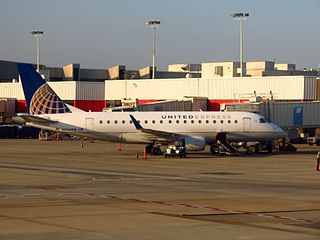 W
WThe United Express Flight 3411 incident occurred at Chicago O'Hare International Airport, United States on April 9, 2017, when David Dao Duy Anh, a Vietnamese-American passenger, was injured while being forcibly removed from a fully boarded, sold out flight to Louisville International Airport. Dao, a pulmonologist and folk musician, refused to give up his seat when requested because he needed to see a patient the day after. Chicago Department of Aviation Security Officers were called to remove him from the plane; in the process, they struck Dao's face against an armrest, then pulled him, apparently unconscious, by his arms along the aircraft aisle past rows of onlooking passengers. Prior to the confrontation, managers offered travel vouchers to passengers to vacate their seats to make room for four deadheading airline employees who needed to travel to the destination, but none of the passengers accepted. The airline then selected four passengers for involuntary removal from the flight. Three other passengers agreed to leave the flight, and Dao was selected to be fourth. Republic Airways operated the scheduled passenger flight on behalf of United Express, a United Airlines regional branch.
 W
WThe Wah Mee massacre was a multiple homicide that occurred during the night of February 18–19, 1983, in which Kwan Fai "Willie" Mak, Wai-Chiu "Tony" Ng, and Benjamin Ng bound, robbed, and shot fourteen people in the Wah Mee gambling club at the Louisa Hotel in Chinatown-International District, Seattle. Thirteen of their victims died, but Wai Chin, a dealer at the Wah Mee, survived to testify against the three in the separate high-profile trials held in 1983 and 1985. It is the deadliest mass murder in Washington state history.
 W
WWong Chin Foo was a Chinese-American activist, journalist, lecturer, and one of the most prolific Chinese writers in the San Francisco press of the 19th century. Wong, born in Jimo, Shandong Province, China, was among the first Chinese immigrants to be naturalized in 1873. Wong was dedicated to fighting for the equal rights of Chinese-Americans at the time of the Chinese Exclusion Act. Nowadays Chinese-Americans consider Wong to be the Chinese "Dr. Martin Luther King" because of Wong's tremendous efforts and huge sacrifices to defend Chinese-Americans' honor in that difficult time.
 W
WYaka mein is a type of beef noodle soup found in many Creole restaurants in New Orleans. It is also a type of Chinese wheat noodle.
 W
WThe Yellow Peril is a racist color-metaphor that represents East Asian peoples as an existential danger to the Western world. As a psycho-cultural menace from the Eastern world, fear of the Yellow Peril is racial, not national, a fear derived not from concern with a specific source of danger or from any one people or country, but from a vaguely ominous, existential fear of the faceless, nameless hordes of "yellow people" in the Asia-Pacific opposite the Western world. As a form of xenophobia, the Yellow Terror is fear of the Oriental, non-white Other, a racialist fantasy presented in the book The Rising Tide of Color Against White World-Supremacy (1920), by Lothrop Stoddard.
 W
W